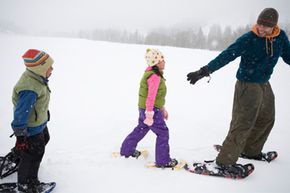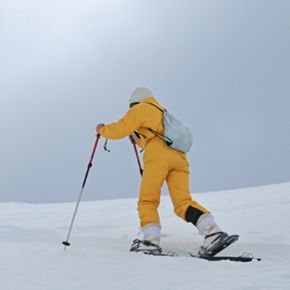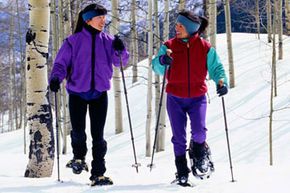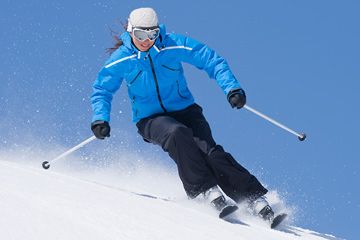In these modern times, when snow falls, we tend to stay inside by a nice, warm fire. Our ancestors didn't have that option, though. In 4000 B.C., people living in Central Asia needed a way to hunt and migrate even when the snow was as high as their waist. It wasn't a matter of convenience, it was a matter of survival. So, 6,000 years ago, around the same time that the wheel was invented, these people strapped flat materials to the bottoms of their feet, which allowed them to walk around as if they were floating on the snow [source: Samuels].
Throughout the next six millennia, snowshoes continued to get people to places that would otherwise be impassable due to snow. These days, however, we're much more likely to use snowshoes for winter recreation than for survival. Snowshoeing has become a popular activity because the equipment is relatively inexpensive (and much less bulky and unwieldy than the snowshoes that were in use just a few decades ago), and it requires very little specialized skill. Many of the sport's aficionados claim that if you can walk, you can snowshoe, making it a viable option for everyone from young children to aging adults.
Advertisement
The next time you're at a ski resort but don't feel up to whooshing down the slopes all day, you might consider snowshoeing; many resorts and gear shops rent snowshoes to those who'd like to try them out. Or, if you live in a snowy climate and spend most of your winter exercising in a smelly gym, you could purchase a pair for less than the cost of a treadmill and get a workout that burns more calories than running [source: Pennington]. Snowshoes are often used by hunters, because it leaves their hands free to hold a gun. And if you'd just like to get closer to nature, in quiet, snowed-in nooks that even skiers can't reach, then snowshoeing may be just the hobby for you.
But how do these contraptions even work? How can strapping on a snowshoe keep you from sinking into the snow?
Advertisement




